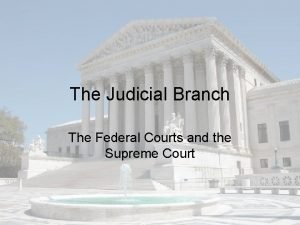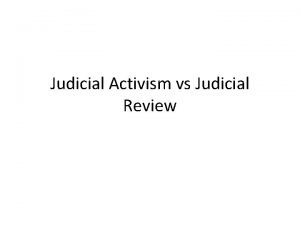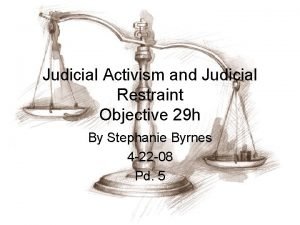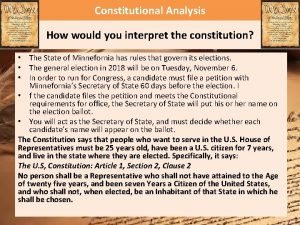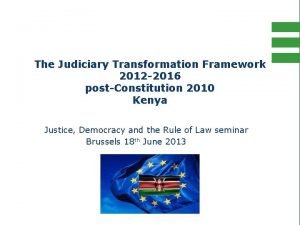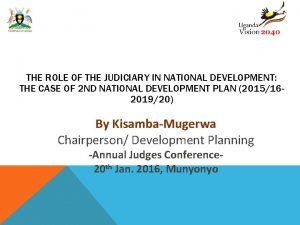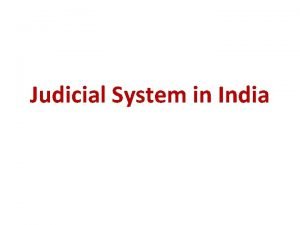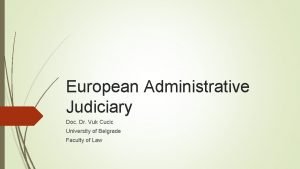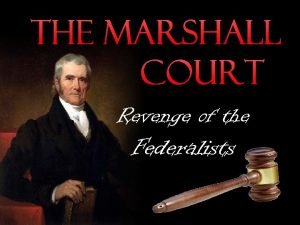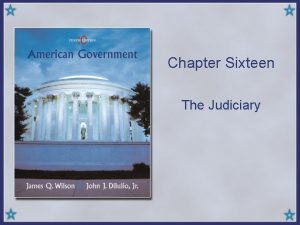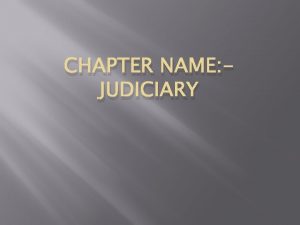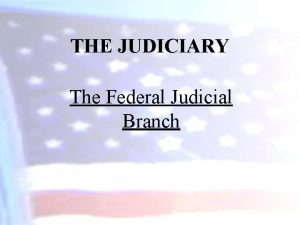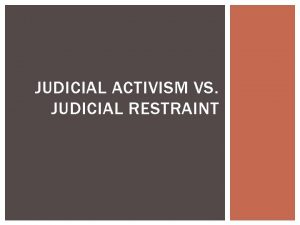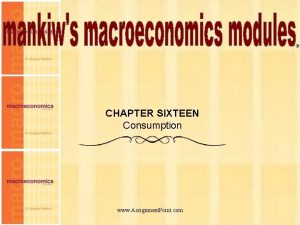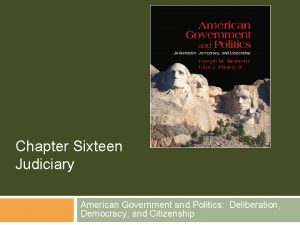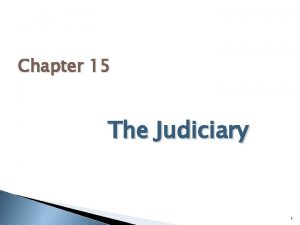Chapter Sixteen The Judiciary Judicial Review Judicial review










- Slides: 10

Chapter Sixteen The Judiciary

Judicial Review • Judicial review: the right of the federal courts to rule on the constitutionality of laws and executive actions • It is the chief judicial weapon in the checks and balances system Copyright © Houghton Mifflin Company. All rights reserved. 2

Development of the Federal Courts • Most Founders probably expected judicial review but did not expect the federal courts to play such a large role in policy-making Copyright © Houghton Mifflin Company. All rights reserved. 3

National Supremacy • Marbury v. Madison (1803): The Supreme Court could declare a congressional act unconstitutional Copyright © Houghton Mifflin Company. All rights reserved. 4

Federal Cases • Federal question cases: involving the U. S. Constitution, federal law, or treaties • Diversity cases: involving different states, or citizens of different states Copyright © Houghton Mifflin Company. All rights reserved. 5

U. S. District and Appellate Courts Administrative Office of the United States Courts (January 1983). Copyright © Houghton Mifflin Company. All rights reserved. 6

Writs of Certiorari • Requires agreement of four justices to hear the case • Involves significant federal or constitutional question • Involves conflicting decisions by circuit courts • Involves Constitutional interpretation by one of the highest state courts Copyright © Houghton Mifflin Company. All rights reserved. 7

The Supreme Court in Action • Most cases arrive through a writ of certiorari • Lawyers then submit briefs that set forth the facts of the case, summarizes the lower court decision, gives the argument of that side of the case, and discusses other issues • Oral arguments are given by lawyers after briefs are submitted Copyright © Houghton Mifflin Company. All rights reserved. 8

Kinds of Court Opinions • Per curiam: brief and unsigned • Opinion of the court: majority opinion • Concurring opinion: agrees with the ruling of the majority opinion, but modifies the supportive reasoning • Dissenting opinion: minority opinion Copyright © Houghton Mifflin Company. All rights reserved. 9

Standing to Sue • There must be a real controversy between adversaries • Personal harm must be demonstrated • Being a taxpayer does not ordinarily constitute entitlement to challenge federal government action • Sovereign Immunity Copyright © Houghton Mifflin Company. All rights reserved. 10
 Judicial activism vs judicial restraint
Judicial activism vs judicial restraint Judicial restraint vs judicial activism
Judicial restraint vs judicial activism Judicial restraint examples
Judicial restraint examples Judicial activism vs judicial restraint
Judicial activism vs judicial restraint Judicial restraint vs judicial activism
Judicial restraint vs judicial activism Judiciary transformation framework
Judiciary transformation framework Safe public and fair judiciary
Safe public and fair judiciary Department of judiciary
Department of judiciary Judiciary system in india
Judiciary system in india Judiciary
Judiciary Whats the judiciary act
Whats the judiciary act
